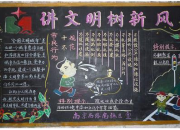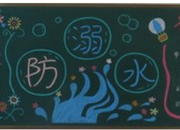英语语法经典ppt课件资料
时间:2021-08-31一.案例背景
一直以来,在英语教学中如何教语法的问题始终是英语教师所关注的焦点之一。目前,尽管NSEFC已投入实践,但有些教师仍不能从学生的角度去设计语法教学,教法持续过去陈旧、单一的模式。在语法课上,他们花大量的时间对语法规则进行陈列,并进行大量的单句中译英翻译或做选择题,而且很多时候在唱“独角戏”。更有甚者,则不顾学生的实际英语水平,教学完全脱离了学生的实际接受能力。长此以往,导致了学生听课的索然无味,且学生就只懂得死抠语法,却不会把语法灵活运用于真实的语言环境中。
《普通高中英语课程标准(试验)》明确指出:“课改的重点就是要改变英语课程过分重视语法和词汇知识的讲解与传授、忽视对学生实际语言运用能力的培养的倾向,强调从学生的学习兴趣、生活经验和认识水平出发,倡导体验、实践、参与、合作与交流的学习方式和任务型的教学途径,发展学生的综合语言运用能力,使语言的学习过程成为学生形成积极的情感态度、主动思维和大胆实践的过程。”语言的学习是一个自主体验、实践的习得过程。语法的学习亦然。且习得的语法知识只有在反复应用中才能被学生消化、吸收。尤其当它与适当的语境结合或让学生用它去“做事”时,学生的体验会更加深刻,然后通过总结及归纳,使学生对所学语法更加明晰。这时,语法知识才会真正内化为学生的真实的能力。
本案例是温州首届学科骨干教师研修班在温州教师教育院培训期间,借用温州二十二中的一个高一班级所上的一节研讨课,内容是NSEFC SB2 Unit4的Grammar部分――“be being done”(the Passive Voice of Present Continuous )。授课老师是瑞安中学的占玉霜老师。占老师这一节课的整体操作模式是按:“认识理解-情景操练-归纳总结-练习巩固-任务活用”的程序进行的。虽然授课班级学生的英语实际水平差强人意,但临近结束时,学生们已从开始时的沉闷、拘谨、懵懂变得积极、清晰而且流畅。授课取得了良好的效果。
二.相关理论
1.行为主义心理学把语言看成是一种行为,是一系列的刺激和反应:S1——R1...S2——R2。S1:实际刺激(stimuli),R1:语言替代性反应(response),S2:语言替代性刺激,R2:实际反应。其中,S1就相当于我们语言教学中创设的真实情境,S2则是通过语言表达功能给学习合作者传递的虚拟情境,学习者(包括合作者)接受这两种情境的刺激,完成语言习得的全过程,即R1、R2所表示的两种反应。
2.情境认知理论反对把知识当作“一个整体的、自足的,从理论上讲与学习和使用它的情境相脱离的东西”。因为这样的知识正如著名的数学家、逻辑学家怀特海(White—head,A.N.)指出的,是“呆滞的知识——仅为人脑所接受却不加以利用,或不进行检验,或没有与其他新颖的思想融为一体,因而,当需要用这些知识来解决实际问题时,它们往往被证明是没有用的。也就是说,情境认知理论超越了传统的知识观,强调知识的情境性、真实性、社会性、应用性、互动性。
三.教学过程及分析
Step1. Warming up and presentation
1.T leads in the class with a game, getting the Ss to guess what animal pictures that she will present on the screen.
2.After the Ss give all kinds of answers, T presents the pictures of 4 kinds of animals, they are: giraffes, antelopes, pandas, and elephants.
T: What do they have in common?
S1: They are animals in danger.
T: Why are they in danger?
S2: People are killing them.
T: Oh! Theyare being killedby people. (on the screen)
T: What are the antelopes being killed for? (T repeats it)
S3: Theyare being killedfor their fur. (on the screen) (with the help of the teacher)
分析:教师直接采用本单元的话题来引入主题,学生感到熟悉。猜谜游戏能激发兴趣,活跃课堂。同时在这样一问一答的过程中自然地呈现了语法结构,很自然,很巧妙。
Step2. Practice (situations from “Reading”)
T: Luckily,nowsome endangered wildlife is _______ (protect) by WWF and the Nature Reserve (on the screen) (T helps the Ss say “is being protected”). See, Daisy is visiting the Nature Reserve (with pictures of Daisy and some animals). The following are the dialogue between her and some animals. Can you imagine what the animals say.
e.g On the screen:
Daisy: What is happening to you now?
Giraffe(S1):Scientists are studying us.
S2:We are being studied by scientists.( with the help of the teacher)
Daisy: And, what are the raisers feeding you with?
Panda(S3):They are feeding us with milk.
S4:We are being fed with milk.(without the help of the teacher)
…(more practice)
分析:这一步来源于本单元“Reading”部分,教师利用这部分创设了一个语境:Daisy is visiting the Nature Reserve. 在这个语境中,学生以动物的口吻,按对话的形式操练了语法结构,这让学生感到新鲜,同时也锻炼了想象力,且复习了课文内容,可谓一箭三雕。而且,随着操练的进行,学生通过模仿从“不会”到“有些会”了。
Step3. Further practice (situations from “real life”)
T: Unluckily, in our life, there’re still some people who don’t treat animals well. Look, this is what they do to the animals.(presents 3 pictures: the 1st: A woman is stepping on a cat; the 2nd: People are eating frogs; the 3rd: people are killing seals). T helps the Ss to describe the 3 pictures:
S1: The cat is being cruelly stepped on.
S2: The frogs are being eaten by people in restaurants.
S3: The seals are being killed for their skin.(Ss can say a little fluently than in the last step)
分析:让学生体会生活中有些人是如何残酷地对待动物的,接受了思想上的教育。而且在进一步操练的过程中学生讲得越来越好了。这一步是上一步的延伸,圆满结束了情景操练部分的任务。
Step4. Conclusion
T: You’ve done a very good job, and now let’s make a conclusion of what we’ve learned. On the screen:
1.现在进行时的被动语态的用法------表示说话时正在进行的被动的.动作
1).The elephants are being protectednow.
2).The pandas are being fed with milkover there.
3).Look! The frog is being eaten.
2.表示目前这段时间内持续进行的动作
1).A nature reserve is being builtthese days.
2).Many interesting experiments are being carried outrecently.
分析:这里教师成功地运用了归纳法。经过前面的几个步骤的操练,学生已经理解并能初步运用这个语法结构的规律,这时候给出的归纳性的文字会使学生理解的程度进一步加深,后面任务的执行会更加从容而自如。
Step5. Exercises (consolidation)
Ss do some exercises to consolidate the grammar, including the multiple choices, sentence transition (with the form “be under/in +n”), a cloze test (about how the environment in the Nature Reserve is being improved, mixed with other forms of Passive Voice of different tense in it. )
分析:从口头操练到笔头练习,使语法知识得以进一步的巩固。且练习之后,学生对各时态的被动语态的区别更加清晰,明了。
Step6. Task
On the screen, there is a picture with a variety of birds in a park, and the words as below: Our government is making a project to encourage more birds to come to our park to spend the cold winter. Please imaginewhat is being doneto attract many birds to come here. (items offered: food, water, nest, camera etc)
Ss cooperate and prepare for a few minutes, then report.(Now, the Ss speak much better and more fluently than the beginning.)
分析:体现了真正意义上的语法任务型教学。这使学生对语言的感知和理解更加清晰,形象更加活跃,思维更加深刻,记忆更加牢固。通过合作使学生对自己的发言更加自信。
Step7. Game
Boys and girls have a game of PK. The girls make up sentences using the active voice “be doing”, and the boys change the sentences to the passive voice “be being done”.
分析:这一步是学生创造性的发挥,句子来源于学生自己的所见所闻。是对所学语法的灵活运用,也使学生的情绪高涨。一节课在高潮中结束。











